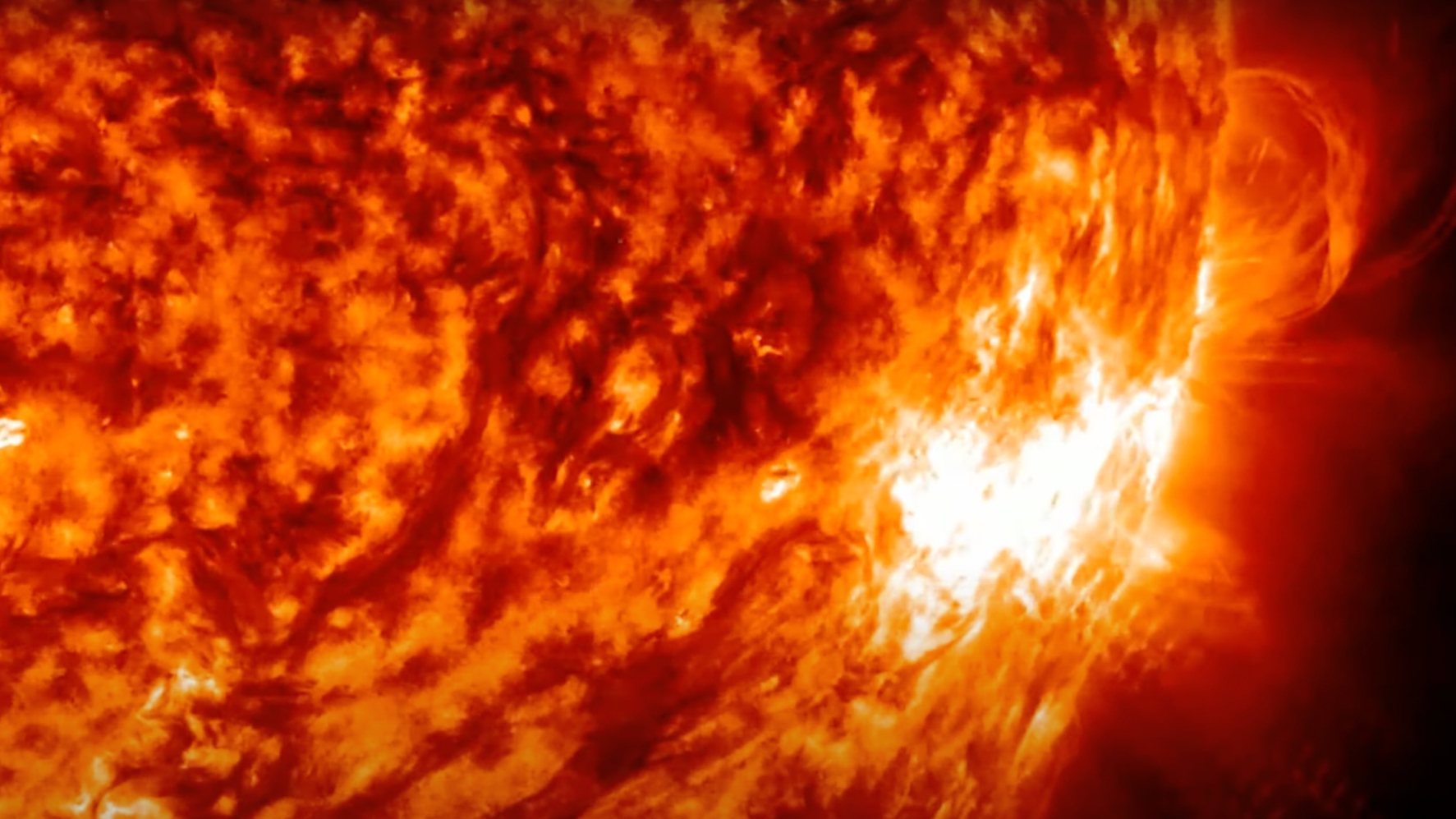
The sunspot AR 3842 remains active as it exits the sun's western limb, firing off an X2.1 solar flare on Monday afternoon (Oct. 7).
The sunspot, which also unleashed the historic X9.05 solar flare last Thursday (Oct. 3) — the most powerful flare in seven years — released the X2.1 at 3:13 p.m. EDT (1913 GMT) on Monday.
Solar flares are classified on a four-level scale, ranging from the lowest-strength B-class to the X-class at the top. The most intense burst of energy released from the sun ever recorded was from a solar flare in 2003, which was estimated to be an X45!

Though not as powerful as that record-setting outburst, Monday's strong X2.1 solar flare produced a significant amount of ultraviolet radiation that led to shortwave radio blackouts in both North and South America as well as over the Pacific Ocean.
Scientists at the U.S. National Oceanic and Atmospheric Administration (NOAA)'s Space Weather Prediction Center confirmed in their forecast discussion that there was the signature of a coronal mass ejection (CME) hurled into space from Monday's eruption as well. At this time, forecasters are still analyzing the data to determine if the CME is headed toward Earth and if we will experience any impacts.
Related: Biggest solar flare since 2017 erupts from sun and Earth is in the firing line (video)
A CME is an impressive expulsion from the sun's outer atmosphere, or corona, that's a combination of magnetic field and plasma. Such blasts of energetic particles generally take a few days to reach Earth and interact with our magnetic field, and forecasters rely on data from coronagraphs to better understand a CME's speed and direction.
In addition to creating quite the aurora show in mid-latitudes, as we've seen time and time again this year, Earth-directed CMEs need to be monitored for their potential to affect satellites and power grids when strong enough. The different levels of effects are explained on NOAA's Space Weather Scales that rank geomagnetic storms, solar radiation storms and radio blackouts from 1 to 5 based on severity.







